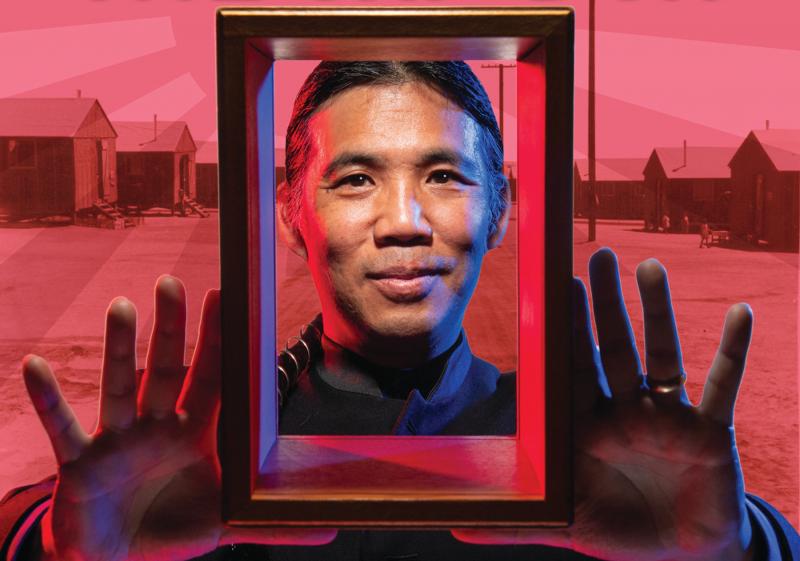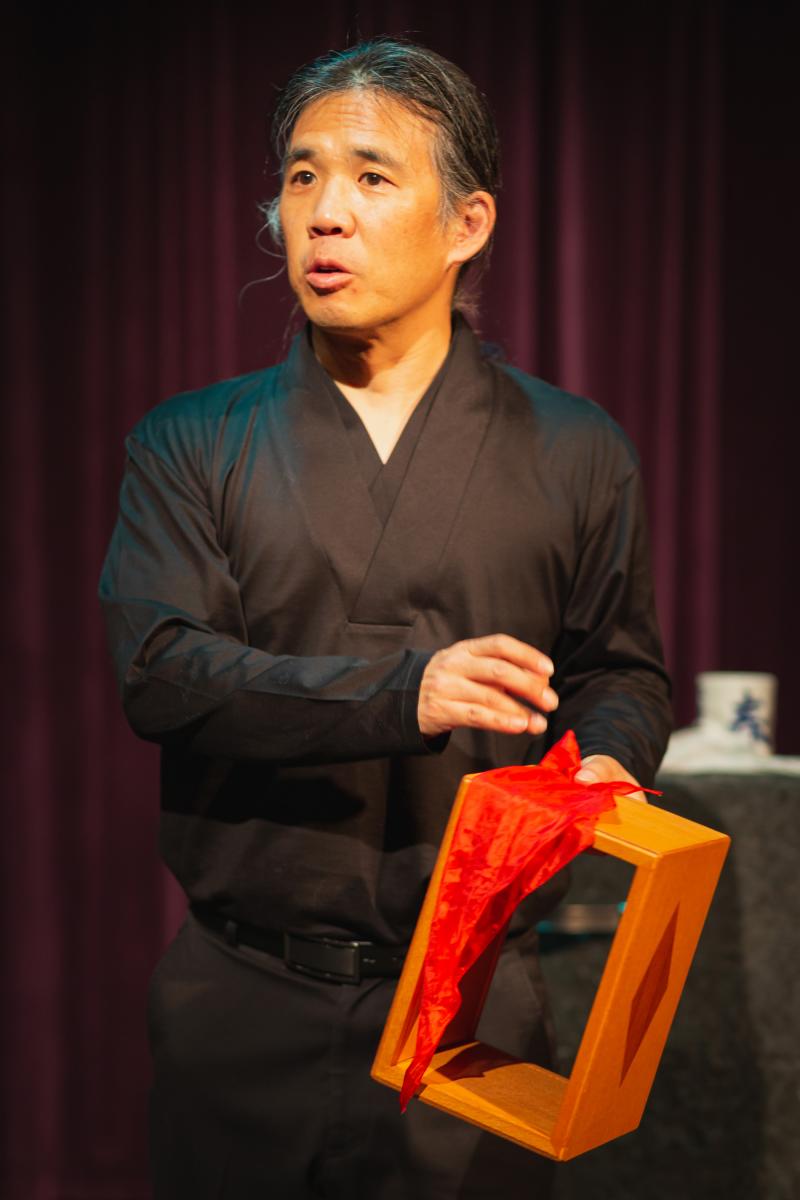Review: A BOX WITHOUT A BOTTOM at The Marsh Berkeley Conjures Magic out of Japanese American Histories

David Hirata has got quite a lot to offer with his multi-layered "A Box Without a Bottom (Soko-nashi Bako)." He combines elements of a magic show with his own personal narrative as he also tells the surprising history of Japanese magicians in 19th-century America, all in a tight 55 minutes. It's a tall order, and Hirata largely succeeds. The idea for the show came to Hirata, a lifelong magic nerd, when he learned that the first Japanese person given a passport to leave Japan for the US was magician Namigoro Sumidagawa in 1866.
Hirata begins the show with a brief, telling anecdote about having his young daughter try sushi for the first time. When, much to his relief, she enjoys the experience, he explains that he is Japanese and that sushi is Japanese food. She then quite naturally asks him, "Am I Japanese?" and he informs her she is half-Japanese. Her response to that is "So I'm half Japanese and half regular?" How can he even begin to explain to his daughter the multiple connotations contained within that simple word, "regular?" What follows may be specific to Hirata's experience as a Japanese American, but I think anyone can relate to his struggle to be seen for who he truly is rather than as a cultural stereotype.
His tale then backtracks to Sumidagawa's arrival in the U.S. where he performs with the Imperial Japanese Troupe, dazzling audiences across Victorian America and even meeting President Ulysses Grant. [Allow me a slight digression: If you follow the Bay Area theater scene at all closely, you may be experiencing a sense of déjà vu at this point. Across the Bay, the Magic Theatre recently concluded its run of Lloyd Suh's "The Chinese Lady" about the first Chinese woman to set foot on American soil in the 19th century. In some ways, that show and "Box Without a Bottom" provide fascinating bookends to the Asian American cultural history over the past 150 years or so. How fortunate we are in the Bay Area to have two such interesting theatrical works within the period of just a few weeks!] Along the way, we learn a lot about the history of American magic and its roots in Asian cultures, both authentic and ersatz. Hirata offers details simultaneously fascinating and appalling, such as Sumidagawa's colleague Wellington Tobias, an enormously popular American magician who performed in yellow face.

Perhaps the most fascinating/appalling detail is something called a "Jap Box," which is an authentic Japanese magic prop brought to America where it acquired its galling sobriquet. Hirata discovered its existence when he was an aolescent and was fascinated by it, but careful not to let his parents know about the offensively named prop. He is in an internal conflict between the illicit thrill of discovering the prop's link to his own ethnic heritage, discomfort over the name, and shame that his parents might find out about it. It's a perfect distillation of the adolescent child / adult parent relationship dynamic.
Hirata then moves on to tell of his parents and grandparents experience being interned during World War II, even while his uncle from Hawaii served in the military. That his family rarely mentioned that period of their lives to him and, when they did, referred to it simply as "camp" is equally heart-rending. His grandmother even had a Japanese expression she used when faced with discrimination that roughly translates to "nothing to be done about it." While clearly that was her coping mechanism for dealing with an unjust world, it also tacitly encouraged Hirata to remain ever the well-behaved, compliant Asian American.
And then there are the magic show tricks incorporated throughout the show. The most successful are ones where the illusions accompanying the stories provide visual counterparts to Hirata's words. Early on in the show, he elevates a fairly standard rope trick by combining a white (i.e. "regular") rope with a colored one to illustrate his own tenuous, shifting place in the world. As a performer, Hirata is on firmer ground as a magician than as an actor. If his brief moments impersonating various historical figures (e.g. Mark Twain, Sumidagawa) are a bit vague in their characterization, his magic is always top-notch. Even sitting at a close distance in the intimate Marsh Berkeley black box, I was unable to spot the tricks behind the illusions. There is one particular occurrence involving a form-shifting egg that I'm still marveling over. It is also a neat illustration of the American/Asian dichotomy that Hirata feels so deeply within himself as he relates to the white/yellow components of the egg.
If it sounds like all of the above is a lot to pack into a 55-minute show, it is. As much as I enjoyed the show, it would likely benefit from being about 20 minutes longer. That would allow some of the more emotionally-freighted sections, such as the one on the WWII interment, a little more time to resonate. I would also love to see the show in a larger space with more sophisticated lighting capabilities to aid with transitions and allow some of the bigger effects to pop. In its current incarnation, though, it is already eminently worth a trip to the Marsh. In fact, in this pre-holiday season, it might just be the perfect family entertainment. Kids will be dazzled by the magic, adults will be engaged by the cultural history, and the generations may come away seeing each other with a slightly new perspective, with a little more understanding.
(Photos by Daniel D. Baumer)
"A Box Without a Bottom (Soko-nashi Bako)" runs through December 1st, on Saturdays and Sundays only, at The Marsh Berkeley, 2120 Allston Way, Berkeley, CA. For information or to order tickets visit themarsh.org or call (415) 282-3055 (Monday through Friday, 1pm-4pm).
Reader Reviews
Videos

